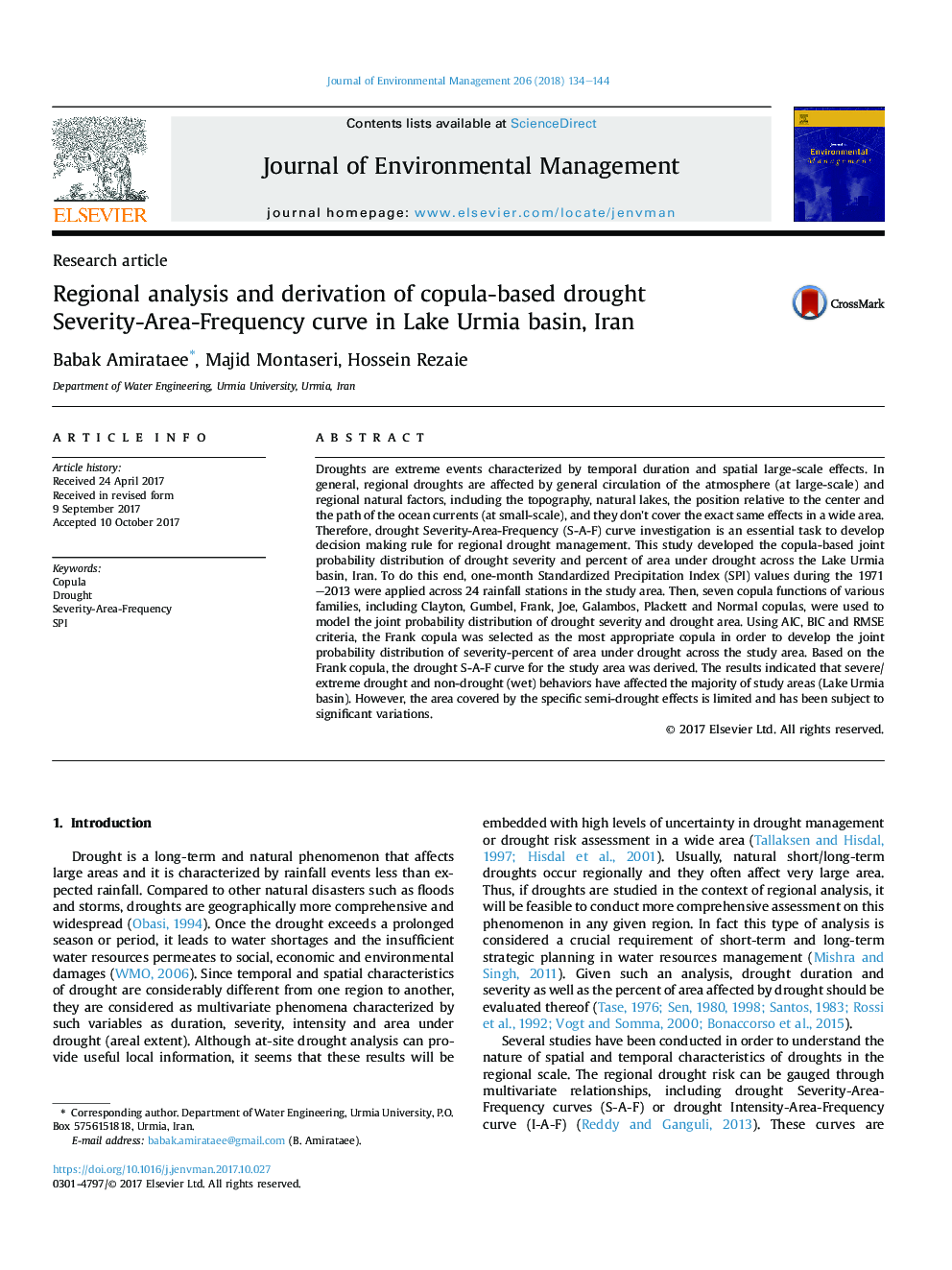| Article ID | Journal | Published Year | Pages | File Type |
|---|---|---|---|---|
| 7478649 | Journal of Environmental Management | 2018 | 11 Pages |
Abstract
Droughts are extreme events characterized by temporal duration and spatial large-scale effects. In general, regional droughts are affected by general circulation of the atmosphere (at large-scale) and regional natural factors, including the topography, natural lakes, the position relative to the center and the path of the ocean currents (at small-scale), and they don't cover the exact same effects in a wide area. Therefore, drought Severity-Area-Frequency (S-A-F) curve investigation is an essential task to develop decision making rule for regional drought management. This study developed the copula-based joint probability distribution of drought severity and percent of area under drought across the Lake Urmia basin, Iran. To do this end, one-month Standardized Precipitation Index (SPI) values during the 1971-2013 were applied across 24 rainfall stations in the study area. Then, seven copula functions of various families, including Clayton, Gumbel, Frank, Joe, Galambos, Plackett and Normal copulas, were used to model the joint probability distribution of drought severity and drought area. Using AIC, BIC and RMSE criteria, the Frank copula was selected as the most appropriate copula in order to develop the joint probability distribution of severity-percent of area under drought across the study area. Based on the Frank copula, the drought S-A-F curve for the study area was derived. The results indicated that severe/extreme drought and non-drought (wet) behaviors have affected the majority of study areas (Lake Urmia basin). However, the area covered by the specific semi-drought effects is limited and has been subject to significant variations.
Related Topics
Physical Sciences and Engineering
Energy
Renewable Energy, Sustainability and the Environment
Authors
Babak Amirataee, Majid Montaseri, Hossein Rezaie,
